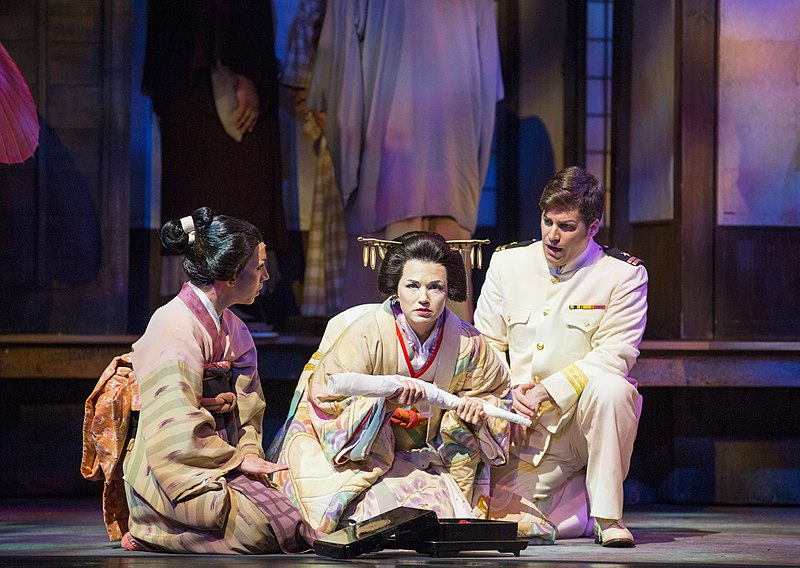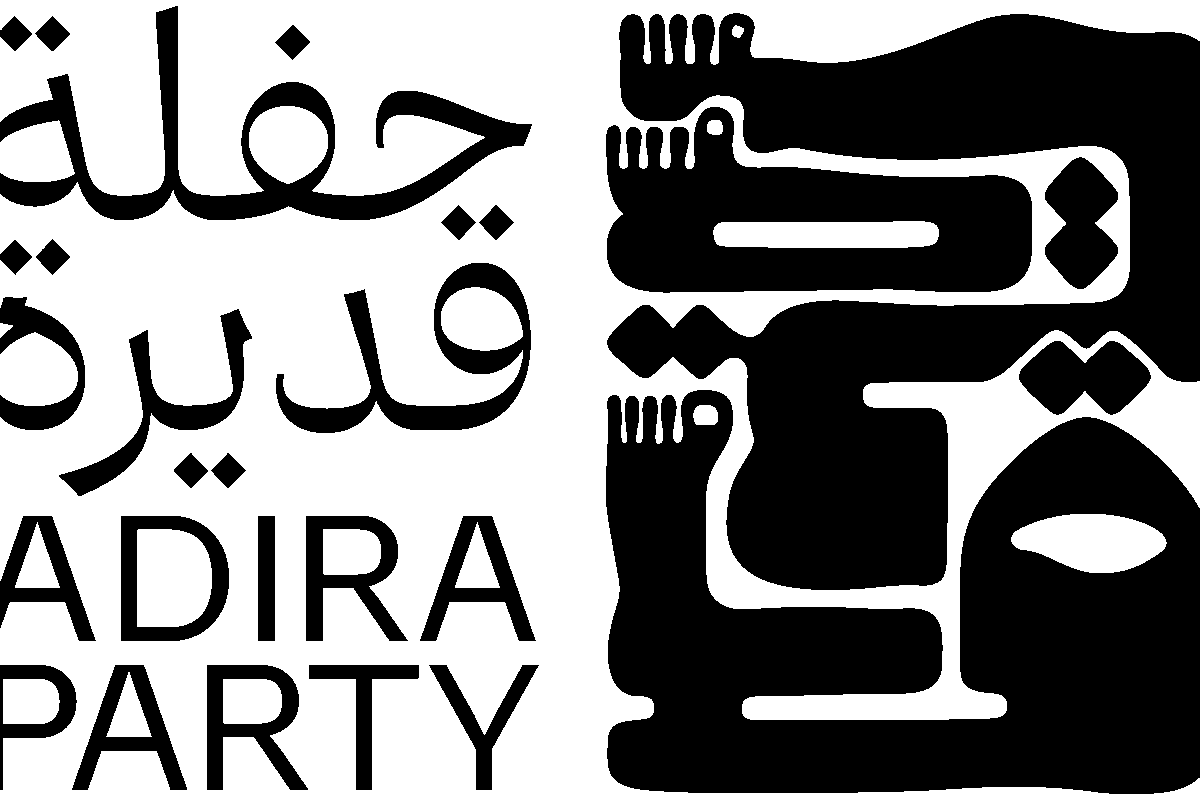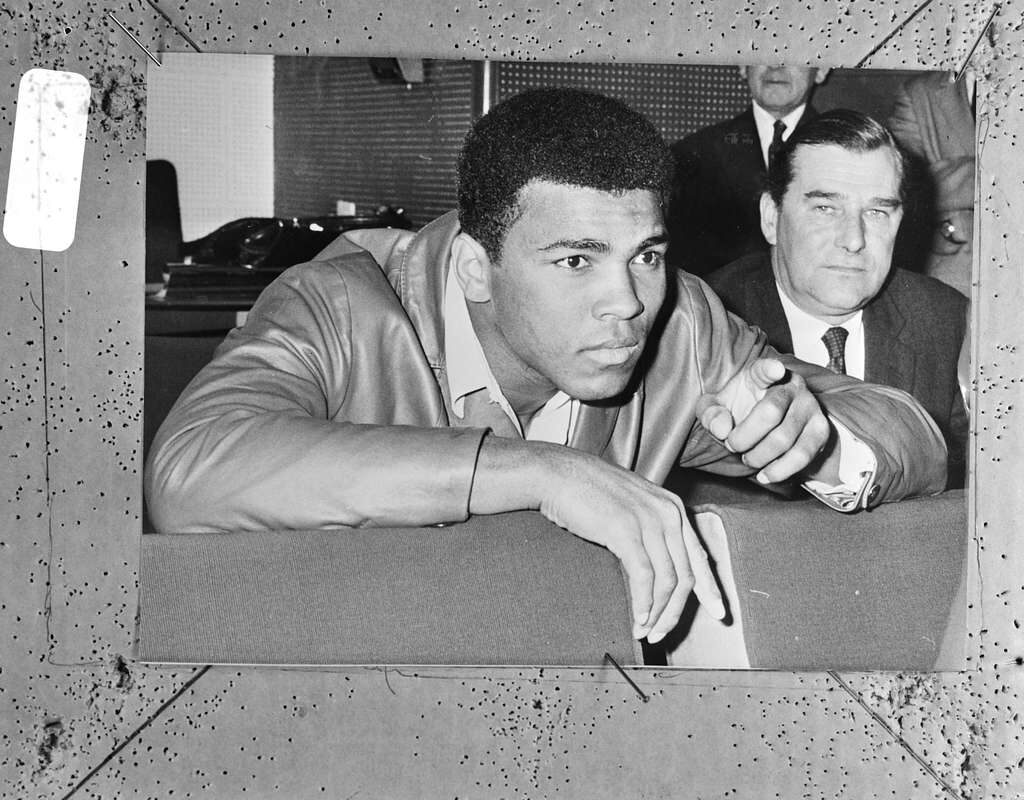I was lucky recently that a relative gave me tickets to the Breganza festival to see ‘Madame(a) Butterfly’ by Giacomo Puccini. This stimulated thoughts on recent views on ‘Butterfly’. For example, that of Oliver Mears, the director at the Royal Opera House:
“We’re all very conscious these days that opera and race have had a complicated relationship and history. There is always a risk, when a Western opera house is portraying a different culture, that it can make missteps.”
After the 1941 attack by the Japanese air force on Pearl Harbor, the opera was banned in the United States until 1946. This suggests it depicted the “enemy Japanese” as having humanity and high morals. And yet:
“The opera has long been criticized for its portrait of Asian women as exotic and submissive, and the use of exaggerated makeup and stereotypical costumes in some productions has drawn fire.”[1]
This article has three aims: Firstly, to consider Puccini and how he came to write it; Secondly to place it in relation to historical reality; finally, to consider charges of cultural appropriation and stigmatisation.
Giacomo Puccini (22 December 1858 – 29 November 1924)
Puccini was born in Italy into a family known for producing composers. He had early fame and was considered the operatic heir of Giuseppe Verdi – the great nationalist composer. Stylistically Puccini was influenced by two strands. Firstly the late realistic ‘verismo’ school. This was:
“a movement in Italian literature and opera (literally, ‘realism’).. influenced by the naturalism of Émile Zola. Verismo was introduced to Italy through the prose writings of Giovanni Verga (1840–1922), (and) his short story set among Sicilian peasants… an alternative to ubiquitous historicist settings of Italian opera.”[2]
Another motivating force for Puccini was internationalism, in the form of Art Nouveau. Applied to Puccini, he displayed in Butterfly:
“an eclectic selection of national styles… Puccini had read voraciously about Japanese culture, had several meetings with the wife of the Japanese Ambassador and attended performances by the Imperial Japanese Theatrical Company… He incorporated a number of authentic Japanese folk songs into the finished score, made liberal use of the pentatonic scale and employed exotic percussion instruments, including the tam-tam and Japanese bells.”[3]
For his efforts, he was vituperated by right-wing artists alleging he was not nationalist enough.
Supposedly “left wing” artists also criticized him, such as F. T. Marinetti’s Futurists, who in later years became closely linked to the fascist regime.[4] Puccini himself appeared mostly to have had little interest in broader politics. However, in 1919 he was paid to write the music for a poem by Fausto Salvatori in praise of Italy’s war victories during WW1 – Inno a Roma (Hymn to Rome). Puccini wrote about the poem that it was “a right load of rubbish”.[5] The music and hymn was not intended for the fascist movement, but they adopted it. It is also true that Puccini hailed Mussolini after the March on Rome, writing that “Mussolini was undoubtedly sent by God for the salvation of Italy.”[6]
In 1923 Puccini met Mussolini twice, seeking support for a national theater. This was before the fascists took control of parliament by subverting the 1924 general election, by when Puccini had died.
The opera Madame Butterfly
Puccini’s mid-career opera Madame Butterfly was completed in 1904. It relies on the world of ‘small things’ and “moments of emotion and pathos”. It originates from a play by David Belasco based on a story by John Luther Long.[7] Its story is simple – if venerably old. Madame Butterfly (Cio-Cio-San) is a 15 year old geisha, who from poverty is sold into a ‘marriage’ with an American naval officer – Benjamin Franklin Pinkerton. But she falls desperately in love with him, before being abandoned with a son. She waits three years in poverty, believing in his return for love. He does indeed return, but it is with his American wife in order to take the son. Butterfly gives up the boy for his future. She then commits suicide by hari-kari with a knife.
Puccini was struck by the doomed heroine, whose dilemma is the heart of the opera. Underlying the tragedy is the ‘collision of cultures’:
“The underlying theme at the core of the tragic plight of Puccini’s geisha heroine, Madama Butterfly, or Cio-Cio-San, is the collision of cultures… or the incompatibility of Eastern and Western culture, forms the underlying engine of all of those dramas: the result of the white race’s arrogant superiority. The heroines belong to non-European races and fall in love with a white man, essentially offending their own racial customs and traditions; and all of their lovers desert them to return to their native lands.”[8]
Is the story of ‘Butterfly’ historically accurate?
The Japanese economy was forced open by the USA’s Commander Perry in 1853 with his armed naval incursion threatening destruction and demanding the right for trading. ‘Butterfly’, is set in that era. This ushered in the changes resulting in the Meiji “Restoration” dynasty (1868-1912). The USA had been eyeing Japan for some time as:
“Japan’s strategic location between California and China made it especially appealing because it could serve as a coaling station for merchant steamships on route to and from China; and for whaling.”
Perry’s kick was part of a chain of events that was to transcend feudalism. As Marx pointed out:
“Japan, with its purely feudal organisation of landed property and its developed petite culture, gives a much truer picture of the European middle ages than all our history books, dictated as these are, for the most part, by bourgeois prejudices.”
Four years after Perry’s mission broke the Japanese “isolation”, USA President Franklin Pierce signed a commercial treaty establishing formal trade relations. Shortly, an American naval force was based in Nagasaki Japan, including intelligence surveillance of the Chinese coast. This had huge social repercussions:
“To further encourage friendship with its European and American allies, the Japanese allowed foreigners to avail themselves of Japanese women by providing them with the same legal rights accorded Japanese men: foreigners could enter into temporary marriages with Japanese women with a convenient arrangement whereby the marriage could be terminated on the expiration of the “husband’s” leave.”[9]
Pinkerton, Puccini’s American character, is an expression of Perry-ism. In the opera, Pinkerton brags of his American machoism – with corresponding racist, imperialist toasts:
“Pinkerton’s aria, “Dovunque al mondo lo Yankee vagabondo” (“All over the world, on business or pleasure, the Yankee scorns danger”), is a sort of male chauvinist ditty about macho American males who travel the world picking, choosing, and conquering women… Pinkerton concludes with a toast to the folks at home, “And to the day of my real marriage to an American wife.”[10]
This aria can be heard as sung by Jose Carreras; or by Richard Tucker with the Metropolitan Orchestra conducted by Max Roach. In the second version, note the opening phrase with its American echo. The predictable, but nonetheless tragic end of Butterfly’s suicide is heralded by a ‘motif’ of a pentatonic theme. Here as seen performed by the Berlin Philharmonic under conductor Mark Elder and as sung by Jana Smitkova (at 2 hr 25 minutes) from 1987.
Actually the story of Butterfly was repeated endlessly – up to the Vietnam War and beyond. It rings true. But what of the wider political frame? Even there the story of Butterfly also mirrors real events.
Marx described Japan as a feudal state. But by the 1850s it had entered a stagnation as comparatively progressive pro-democratic forces in Japan wished to further harness the potential of society for profits. By 1869, decrees were passed to abolish feudalism.
How do Marxists view Japan’s ‘Meiji Restoration’?
Gavin Walker describes how the small warring feudatories had intensified exploitation of the peasantry, raising many peasant revolts:
“One of the motors for the development of the modern Japanese state was the intense agrarian struggle that existed at the end of the Tokugawa system of provincial city-states. That usually came in the form of peasant revolts, which increased radically in number between 1850 and the early 1860s, leading up to the Meiji Restoration of 1868.”
The problem faced by the ruling classes of feudal Japan by mid 19th century was to catch up to the development of Western capital:
“Much of the economic difficulties that Japan experienced during the Taisho period were directly related to its status as a late developer… the oligarchs ruling in the name of the Meiji emperor launched the Meiji reforms in the 1870s to strengthen Japan militarily enough to oppose external pressures from more advanced capitalist countries – ‘to expel the barbarians’.”[11]
This had to be done fast if the Japanese ruling class was to keep power and profits, as Walker explains:
“(Japan) compressed its development into a small space of roughly fifty years from 1868 and the Meiji Restoration, which broke the feudal power of the old Shogunal government and established the route toward a modern state in Japan, to the 1930s. Over the space of fifty or sixty years, Japan passed through the stages of being a dominated or peripheral country with a late transition from feudalism to becoming a very rapidly industrializing country, particularly in the 1880s and 1890s, when enormous investment by the state in munitions manufacturing and heavy industry prompted … modern Japan, which was the turn to imperialism.”
The concrete steps taken were thorough:
“massive industrialization under the slogan ‘fukoku kyohei’ (“enrich the country and strengthen the military”), its goal to match the achievements that England and France had required more than a century to produce.”[12]
“The 1868 Charter Oath eliminated the class restraints characteristic of the centralized feudalism of the Tokugawa period… and erased all legal arrangements that could be identified with feudal ‘backwardness’. The han (feudal domains) were abolished, and administrative prefectures were established, a single Imperial military force… and a conscription law destroying the former division of labour between samurai and commoner; … a single uniform currency, and a major reform in the system of agricultural land taxation..”[13]
However the Meiji Restoration of an Emperor was a sham – by which I mean that the restoration of an emperor to full power was simply to disguise the new rule – of a new ruling class aiming to modernize. The most powerful feudal rulers agreed to re-empower the previously displaced emperor. They then used war to force unwilling feudal potentates to do the same, erecting a constitutional monarchy, but with a theocratic mystical facet of an all-powerful Emperor:
“When, in the Meiji Restoration, the feudal government was toppled, one looked to the authority of the emperor for an ideal of national unity beyond the feudal regional subdivisions. The leaders of the new regime tried to secure their despotic power by giving to the emperor the position of an absolute ruler with spiritual authority and political power. … the maintenance of their despotic power and the stimulation of the free activity of the people, was solved, in the Constitution by divinizing the emperor and making him the supreme arbiter of the rights and duties of the people and, on the other proclaiming that every citizen can accede, according to his abilities, to any position except that of emperor. In this way, 1889 saw the birth of the Emperor System. This … combined a constitutional monarchy … (with) a theocratic system, whereby the authority of the state position to dominate also the inner mind of the people in the name of the emperor as a religious Absolute.”[14]
The class character of the state was that of a dominant capitalism:
“Under the guidance of such a state, Japanese capitalism was driven on along the lines of interest of big business and big industry and on the basis of a landlord system of land ownership. However, in this system, the social and economic antagonism of landowners and tenants, capitalists and workers did not appear except as private disputes. The opposition was palliated and disguised ; and, thus, the interests of the independent producers, the tenants, and the workers were, in fact, crushed.”[15]
The character of the state was the origin of a fundamental divide in Japanese communism. One side – the Rono faction – argued that the bourgeois-democratic revolution was completed. The tasks remaining were now those of socialism. The other side was the Koza faction – which argued the revolution had been incomplete. Both sides agreed that the Meiji Restoration targeted feudalism.
Reverting to Puccini – Should “Butterfly” be amended to modernize it?
While unfashionable in today’s youth, we will not try to argue the virtues of operatic music. However, most opera commentators appear to agree that Madame Butterfly’s music remains captivating. But many people also argue that it reinforces the views of submissiveness of Japanese women. Some have proposed to change the ending so that Butterfly walks out of the final meeting with Pinkerton alive, with her child.
Yet maybe this ignores the reality that a “Butterfly” then had only three free choices – of which her final choice was to turn her back on the two more submissive options:
“When she faces the realization that she has been abandoned, she faces three alternatives: first, marriage to Prince Yamadori; second, resumption of her former geisha profession, and third, death — her most courageous choice. It is Butterfly’s decision to resolve her conflict through self-annihilation that transforms the story into a grave tragedy that elevates her to the status of a true tragic heroine.”[16]
Another artistic question frequently raised is whether the art of one nation can be expressed fairly, or even adequately – by those not of that nation? For example in “Butterfly’ – should only Japanese or “Asian” performers present it, including Madame Butterfly?
Speaking personally, this is simplistic and should be rejected in favour of individual approaches. For example, playing blackface evokes the racism of the deep South in the 19th century and is not performed with respect for Black Americans. In Butterfly, the portrayal is of humanity and respect for a culture. While Puccini was unlikely to have fully thought it through, his opera shows an empathy for the suffering of the ‘little character’, the woman so wretchedly treated.
There are other considerations too – of the skills that a performer needs to have. In Madame Butterfly, the evocation of the despair and the humanity of the themes, is enhanced by the degree of musical accomplishment. If that is present, it perhaps may trump other considerations of the nationality of the singer.
For this viewer, the opera as it stands confirms several things. For example, the imperialist relations of the USA to Japan, the crumbling of feudal society in Japan after Commander Perry’s arrival, the absence of independent rights for women which still endures. Besides which it is a moving depiction, in musical and artistic terms of human – mainly women’s – suffering.
To conclude: Modernizing the opera – for example changing the ending – is of course a legitimate choice for a director or artist. But the opera in its traditional form is both a true reflection of history, and has an artistic integrity that has proven powerful to audiences.
Citations
[1] Javier C. Hernández, “Reimagining ‘Madame Butterfly,”; July 24, 2023; NYT
https://www.nytimes.com/2023/07/24/arts/music/madame-butterfly-asian-creators.html
[2] Dennis Kennedy (Ed); The Oxford Encyclopedia of Theatre and Performance; Oxford, 2003.
[3] Wilson, Alexandra, The Puccini Problem: Opera, Nationalism, and Modernity, Cambridge University Press, 2001; p. 114.
[4] Wilson,. p. 168; 171.
[5] Wilson,; 2001; p. 187.
[6] Wilson,; 2001; p. 193.
[7] Fisher, Burton D., Puccini’s Madama Butterfly: Opera Classics Library Series, Opera Journeys Publishing, 2001; p. 12-13.
[8] Burton D., 2001; p.15-16.
[9] Fisher, 2001; p.17.
[10] Fisher; 2001; p.17.
[11] Germaine A. Hoston, Marxism and the Crisis of Development in Prewar Japan, Princeton 1986; p.5.
[12] Huston Ibid; p.5.
[13] Huston Ibid; p.5.
[14] Yoshitomo Takeuchi “La Philosophie Japonaise Contemporaine”; Revue Internationale de Philosophie, 1974, Vol. 28, No. 107/108 (1/2), pp. 49-68.
[15] Takeuchi, Ibid.
[16] Fisher., Ibid; 2001; p.14.



